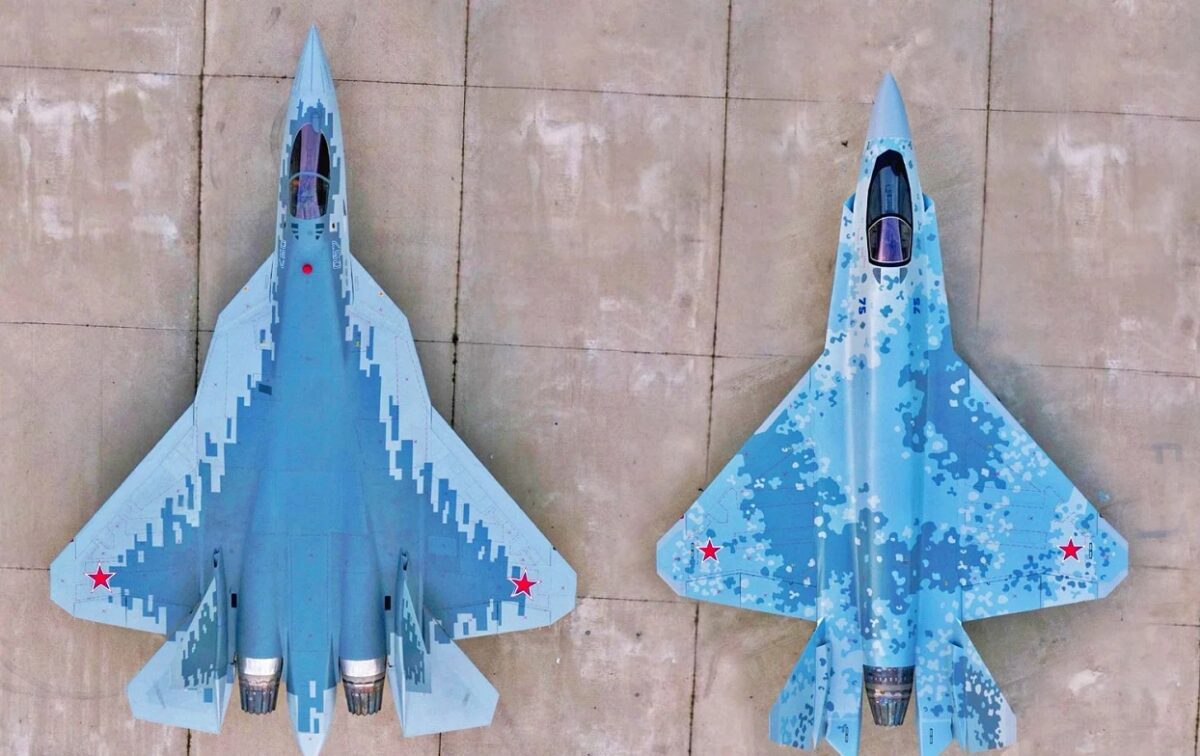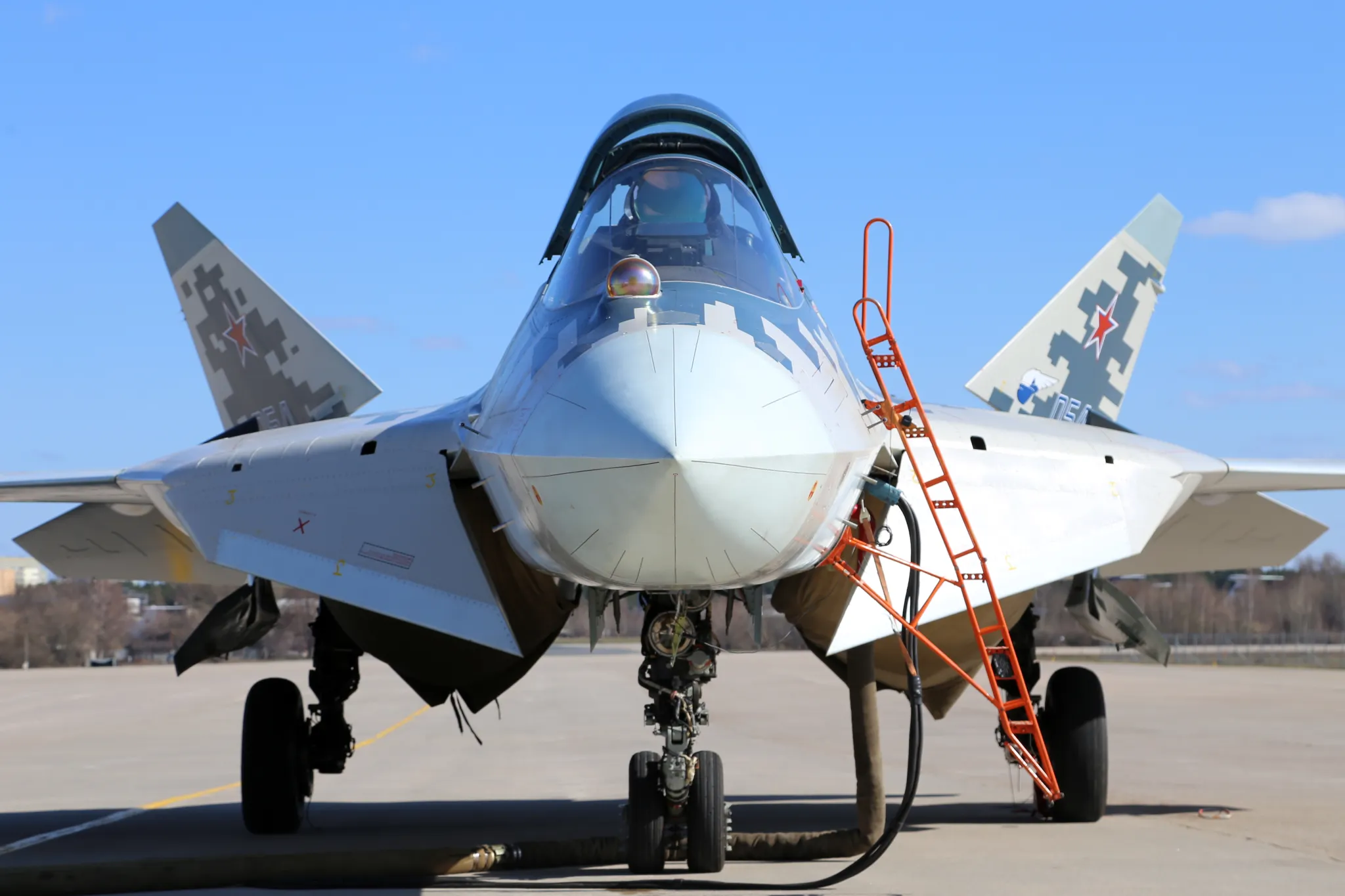Military Analysts and Expert Peter Suciu Breakdown Russia’s New Su-57 Claim: Since launching its unprovoked invasion of Ukraine six months ago, the Russian military is now relying on antiquated T-62 main battle tanks (MBTs) as losses have mounted of the more modern T-72 and even T-90 MBTs. Moreover, the Kremlin has failed to achieve air superiority, yet on Sunday, Russia’s Minister of Defense Army General Sergey Shoigu told state TV that the Sukhoi Su-57 has been used “brilliantly.”
Apparently, the aircraft’s stealth is so massively impressive that few have even seen the aircraft in combat operations. Yet, Shoigu stood by his statement.
“We can… [say] we have used and are using the Su-57 aircraft,” Shoigu said during an interview on the Rossiya-1 TV channel, according to Tass. “This aircraft has shown itself brilliantly. The aircraft has a very high degree of protection against various air defense systems, has protection against missiles. There is a lot of stuff there…Most importantly, it has very powerful weapons. We also tried and tested these weapons, they work brilliantly, I can’t find another word for it.”
It was in May that a source in the Kremlin told Tass that the Su-57 fighter jets had been deployed by the Russian Aerospace Forces during its so-called “military special operation” in Ukraine. Even if true, it seems to have done little to help Russia win control of the skies and achieve air superiority. That hardly seems to be a “brilliant” success.
Su-57: Russia’s “Fifth-Generation” Fighter
Moscow has long touted the capabilities of its Sukhoi Su-57 (NATO reporting name “Felon”) in recent years, while some Russian aviation experts have suggested its capabilities exceed those of even the United State Air Force’s F-22 Raptor and F-35 Lightning II.
The aircraft was reportedly tested for the first time in actual combat operations in Syria in 2018, but its performance there could hardly be considered exemplary. One issue is that Moscow simply doesn’t have significant numbers of Su-57 aircraft to deploy. According to current reports, the Russian Air Force is only scheduled to receive 22 Su-57 jets by the end of 2024 and could receive upwards of just 76 by 2028.
Designed to destroy all types of air, ground, and surface targets, the Su-57 has a supersonic cruising speed, in-fuselage armament, radio absorption coating (stealth technology), as well as the latest complex of onboard equipment. Development of the Su-57 began in 2002 at the Sukhoi Design Bureau and the Russian United Aircraft Corporation as part of the Russian Air Force’s PAK FA fifth-generation fighter jet program.
Disappearing Act
It became the first Russian aircraft to utilize stealth technology, while it was further designed to have supercruise, supermaneuverability, and advanced avionics to overcome attacks from the prior generation fighter aircraft, as well as ground and naval defenses.

Su-57 and Su-75 Side-by-Side. Image Credit: Rostec.
State media had previously reported that a single Su-57 had been deployed in combat in Ukraine, but if so, it has made little if any contribution to the war effort. Perhaps the aircraft’s stealth is so good that few Ukraine or western observers were able to see it, much like Sergey Shoigu who also disappeared for a few weeks earlier this year.
What the Experts Told 19FortyFive About the Su-57
“I find it nearly beyond insane that Russia would ever send the Su-57 to fight in Ukraine,” explained Harry J. Kazianis, a military expert who has wargamed extensively the Russia-Ukraine conflict and is President of the Rogue States Project. “If Ukraine took down a Su-57 it would be such a big PR victory for Kyiv that it would call into question even more than it is now the capabilities of the Russian military and Russian Air Force. Why would Putin take such a chance? Simple, he won’t.”
A Senior Editor for 1945, Peter Suciu is a Michigan-based writer who has contributed to more than four dozen magazines, newspapers, and websites with over 3,000 published pieces over a twenty-year career in journalism. He regularly writes about military hardware, firearms history, cybersecurity, and international affairs. Peter is also a Contributing Writer for Forbes. You can follow him on Twitter: @PeterSuciu.

